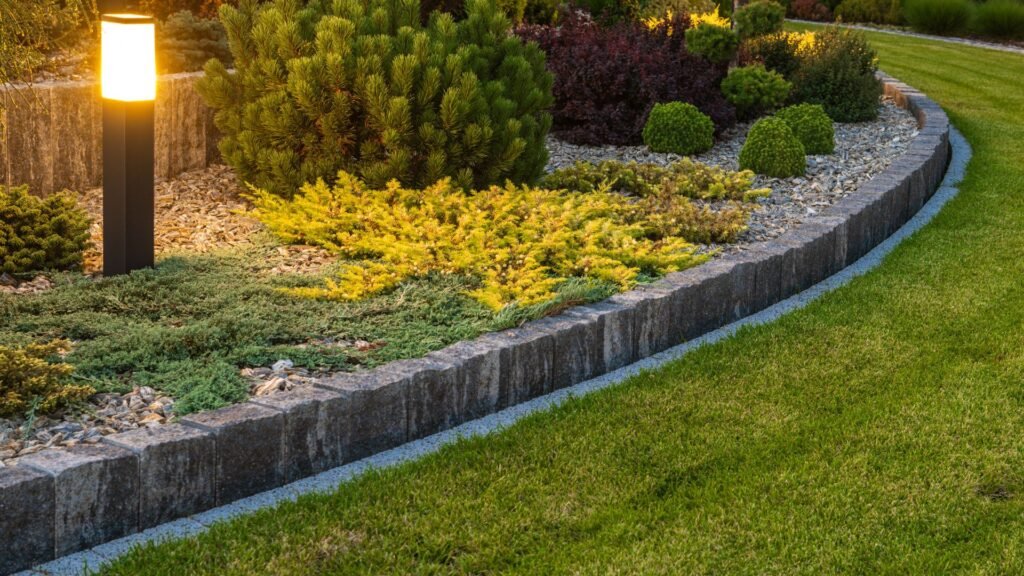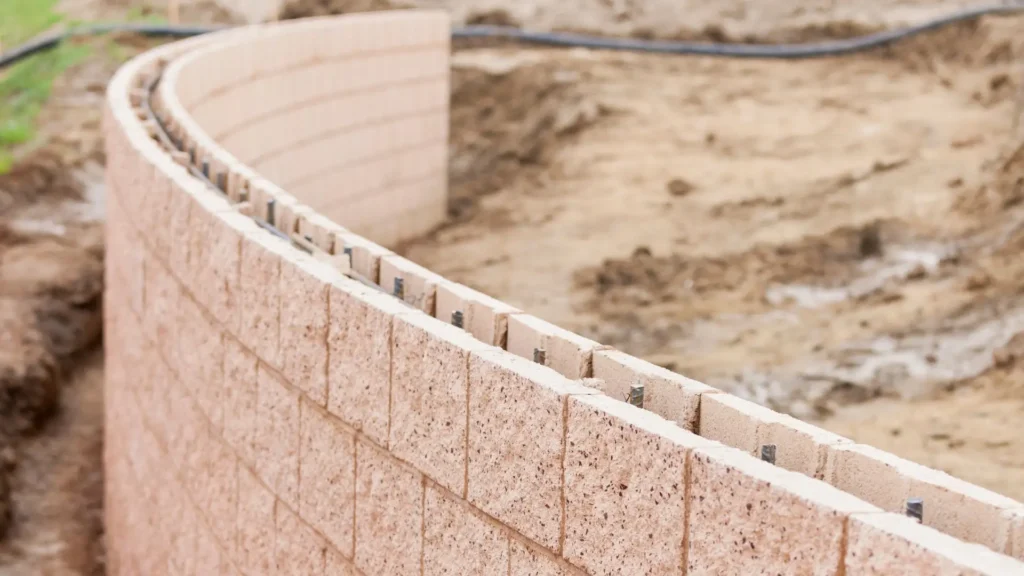Welcome to your go-to guide on retaining wall types in NZ , whether you’re reshaping a sloped backyard, stopping soil erosion, or simply adding structure to your garden, choosing the right wall matters. With so many options available, from classic timber to sturdy concrete blocks, it’s easy to get overwhelmed. In this post, we’ll break down the most common retaining wall types used across New Zealand, explain what makes each one unique, and help you figure out which best suits your property, budget, and project goals.
The most common retaining wall types in NZ include timber walls, concrete block walls, keystone or interlocking blocks, gabion walls, stone walls, concrete sleepers, and piled walls. Each type varies in durability, cost, appearance, and suitability for different slopes or soil conditions.
Table of Contents
Why Kiwis Build Retaining Walls
In New Zealand, retaining walls are more than just landscaping features, they’re practical solutions to common challenges faced by homeowners across the country. With the unique terrain found in many regions, especially in hilly or coastal areas, retaining walls play a vital role in managing land effectively and safely.
One of the most common reasons Kiwis build retaining walls is to support sloped properties. Many homes in places like Wellington, Dunedin, and parts of Auckland are built on uneven ground. Retaining walls help to level out these sloped areas, making the space more functional and preventing issues caused by shifting soil.
Another major reason is erosion control. Heavy rainfall and loose soil can quickly lead to land slipping or washing away, especially on inclined surfaces. Retaining walls provide a solid barrier that holds back the earth, helping to stabilize the soil and reduce the risk of damage to homes, driveways, and garden areas.
Homeowners also build retaining walls to create flat, usable spaces. On sloped land, it can be hard to install a patio, parking spot, or even a simple lawn. A well-placed retaining wall can transform that incline into a usable area for a garden, outdoor seating, or a safe driveway.
Retaining walls also serve as clear boundary markers. When placed along property lines, they offer both visual separation and physical structure, which is especially useful when there’s a difference in elevation between two neighbouring properties.
It’s also important to mention that certain retaining wall projects may require building consent under New Zealand law. According to the NZ Building Code, you typically need consent if the wall is over 1.5 metres high or supports additional structures like fences or driveways. Always check with your local council before starting construction to ensure you meet the necessary regulations. You can find more information on consent requirements from New Zealand’s Building Performance website.
Whether you’re managing a steep slope or improving your outdoor layout, retaining walls offer real, practical benefits for Kiwi homeowners, making them a common and valuable feature across many NZ properties.
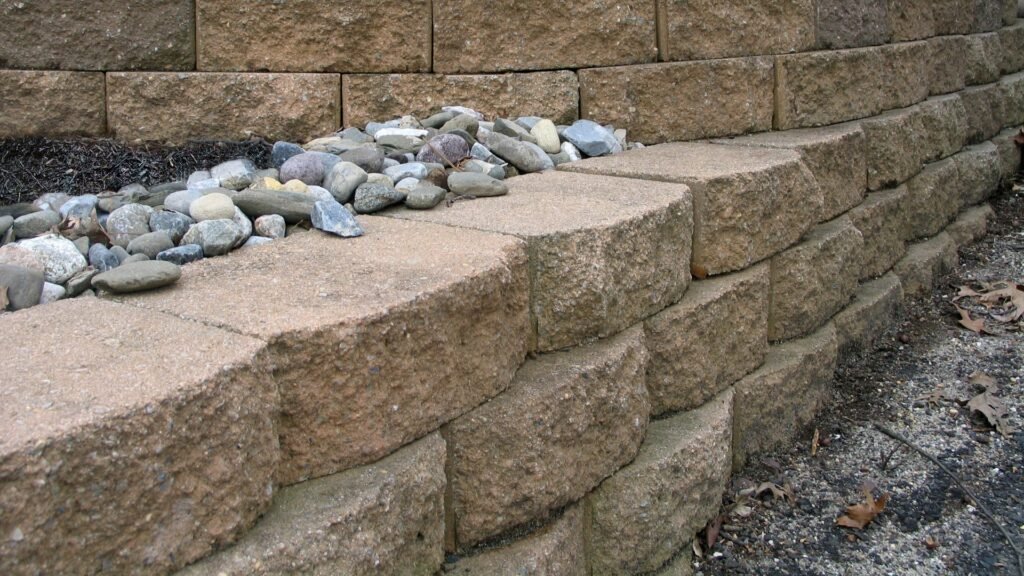
Key Considerations Before Choosing A Wall Type
Before picking the right retaining wall for your property, it’s important to understand a few key factors that influence both the performance and cost of your project. Not all retaining walls are created equal, and choosing the wrong type can lead to early failure, wasted money, or even problems with local council rules. Here’s what you should think about before deciding.
Soil Type
Different soil types behave differently under pressure. For example, clay soils retain water and expand when wet, which adds pressure behind the wall. Sandy soils, on the other hand, drain easily but may shift more over time. Understanding your soil type helps you choose a wall that can handle movement, moisture, and weight without collapsing. If you’re unsure what kind of soil you have, it’s worth getting it tested or asking a local contractor.
Drainage
Poor drainage is one of the most common reasons retaining walls fail. When water builds up behind a wall, it adds weight and pressure that can cause cracking or collapse. Your wall design should include proper drainage features such as gravel backfill, drainage pipes, or weep holes. Some wall types, like gabion or interlocking block walls, allow water to pass through naturally, making them ideal for areas with heavy rainfall or poor drainage.
Wall Height And Purpose
The height of your wall plays a big role in the type of structure you’ll need. Small garden walls under 1 meter can often be built using simple materials like timber or blocks. But if you’re retaining a steep slope or supporting a driveway, you’ll need a stronger system like reinforced concrete or piled walls. Think about why you’re building the wall , is it just for looks, or does it need to support a load? The purpose will help you match the design to the job.
Budget
Your budget will help narrow down your options quickly. Timber walls are usually more affordable but may not last as long. Stone or concrete sleeper walls are more expensive but offer better durability. Factor in material costs, labor, and any extra features like drainage systems or engineering plans. Be realistic about what you can afford without cutting corners that could cost you more later.
DIY Vs Hiring A Professional
Some retaining wall types are beginner-friendly and suitable for DIY, especially timber or interlocking blocks. These options come with easy-to-follow instructions and can save you money on labor. But for higher or structural walls, or if you’re dealing with tricky terrain, it’s safer to hire a professional. Contractors bring the right tools, skills, and knowledge of local building requirements, which can prevent costly mistakes.
Local Regulations
In New Zealand, retaining walls over 1.5 meters high typically require building consent from your local council. Even shorter walls may need consent if they’re near a boundary or support a driveway. Some councils also require engineered plans for walls over a certain height or in specific conditions. Always check with your local authority before starting your build to avoid fines or having to redo the work.
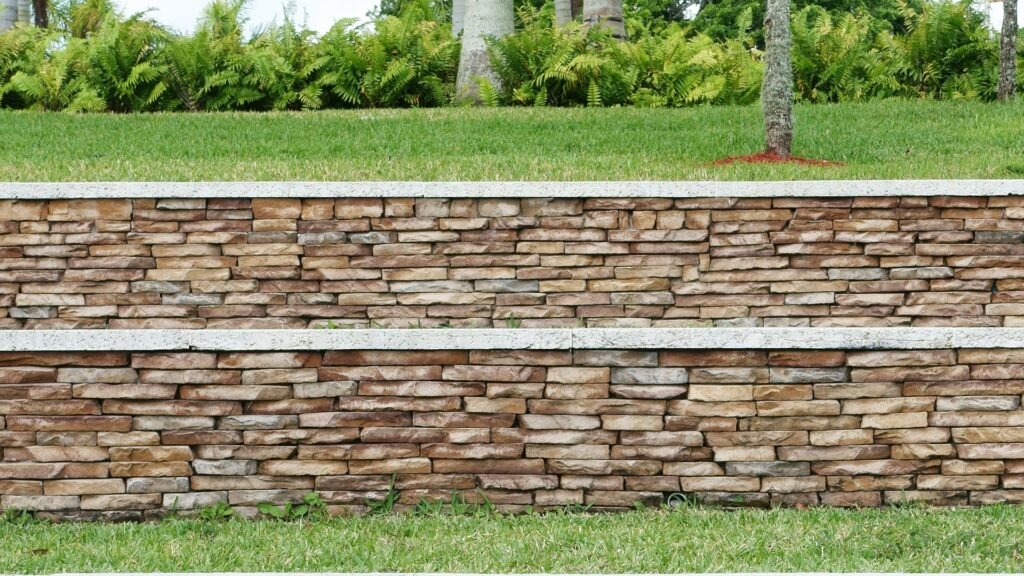
Most Common Retaining Wall Types In NZ
Choosing the right retaining wall can make a big difference in how well your outdoor space functions and looks. In New Zealand, the terrain varies from flat urban lawns to steep, rugged backyards. That’s why homeowners use a range of retaining wall types based on soil conditions, drainage needs, and design preferences. Below are the most common options used across the country, each with a breakdown of how they work, where they fit best, and what you should expect in terms of cost and effort.
Timber Retaining Walls
- What It Is
A timber retaining wall uses treated wooden posts and sleepers to hold back soil. It’s one of the most popular and cost-effective options in NZ. - How It Works
Posts are driven into the ground, then horizontal sleepers are attached to form a sturdy barrier. Proper drainage behind the wall is essential to prevent rot and structural failure. - Best Use Cases
- Low walls under 1.2m
- Garden beds and borders
- Residential landscaping with minimal soil pressure
- Pros And Cons
- Pros: Affordable, fast to build, natural look
- Cons: Can rot over time, not ideal for high loads
- Estimated Cost Range
$250 – $400 per metre (including installation) - DIY Difficulty
Moderate – good for confident DIYers with basic tools and skills
Concrete Block (Masonry) Walls
- What It Is
These walls use concrete blocks (sometimes filled with steel and concrete) to form a strong, stable structure. - How It Works
Blocks are laid on a concrete footing and can be reinforced vertically and horizontally. Drainage pipes and gravel are added to prevent water build-up. - Best Use Cases
- High retaining walls
- Structural walls near driveways or buildings
- Urban and commercial spaces
- Pros And Cons
- Pros: Durable, fireproof, modern finish
- Cons: Higher cost, needs professional skill for stability
- Estimated Cost Range
$600 – $900 per metre (including installation) - DIY Difficulty
Hard – usually best left to professionals or those with masonry experience
Keystone Or Interlocking Block Walls
- What It Is
These modular blocks are designed to stack and lock into place without mortar. - How It Works
Each block has a lip or pin system to secure the row above it. They rely on gravity and proper backfill for strength. - Best Use Cases
- Landscaping and decorative walls
- Medium-height walls (up to 1.5m)
- DIY-friendly residential projects
- Pros And Cons
- Pros: Easy to install, strong with a proper base
- Cons: Appearance may not suit all designs
- Estimated Cost Range
$400 – $700 per metre (including installation) - DIY Difficulty
Easy to moderate – suitable for DIYers with basic tools
Gabion Walls
- What It Is
Gabion walls are made from steel mesh cages filled with rocks or stones. - How It Works
Cages are stacked and filled onsite, often without mortar. The weight of the rocks and the design give it structure and stability. - Best Use Cases
- Areas with poor drainage
- Coastal or flood-prone properties
- Modern or industrial-style landscapes
- Pros And Cons
- Pros: Excellent drainage, unique look, long-lasting
- Cons: Bulky, may not blend with all home styles
- Estimated Cost Range
$300 – $600 per metre (including installation) - DIY Difficulty
Moderate – manageable with basic building knowledge
Stone Retaining Walls
- What It Is
Built using natural stones or cut stone blocks, these walls provide a timeless, high-end look. - How It Works
Stones are stacked with or without mortar. A well-graded base and drainage system are critical to stability. - Best Use Cases
- Heritage homes or gardens
- Decorative walls in premium landscapes
- Low to medium-height structures
- Pros And Cons
- Pros: Visually appealing, blends into nature
- Cons: Expensive, time-consuming to build
- Estimated Cost Range
$700 – $1,200 per metre (depending on stone type) - DIY Difficulty
High – best for stonemasons or experienced builders
Concrete Sleeper Walls
- What It Is
This style uses precast concrete sleepers placed horizontally between vertical steel or concrete posts. - How It Works
Posts are set deep into the ground, and sleepers slide into place. It creates a solid wall that resists pressure and erosion. - Best Use Cases
- Tall walls need strong structural support
- Boundaries in subdivisions
- Driveways and commercial properties
- Pros And Cons
- Pros: Extremely durable, low maintenance
- Cons: Industrial look, higher upfront cost
- Estimated Cost Range
$500 – $800 per metre (installed) - DIY Difficulty
Hard – requires heavy materials and correct alignment
Piled Retaining Walls
- What It Is
Piled walls use long vertical posts (timber or steel) driven deep into the ground to support horizontal boards. - How It Works
The piles carry the structural load, making the wall suitable for steep or unstable slopes. - Best Use Cases
- Steep sites
- Areas with high soil pressure
- Coastal or wet conditions
- Pros And Cons
- Pros: Strong under pressure, adaptable to hard terrain
- Cons: Requires machinery, more expensive than surface options
- Estimated Cost Range
$700 – $1,000+ per metre (depending on pile type and soil) - DIY Difficulty
Very hard – needs specialist equipment and engineering
Choosing the right retaining wall type in NZ comes down to your site conditions, style preferences, and budget. Whether you’re after a natural timber look or a heavy-duty concrete solution, there’s an option that fits your needs. Understanding how each wall works helps you make a confident, informed decision before starting your project.
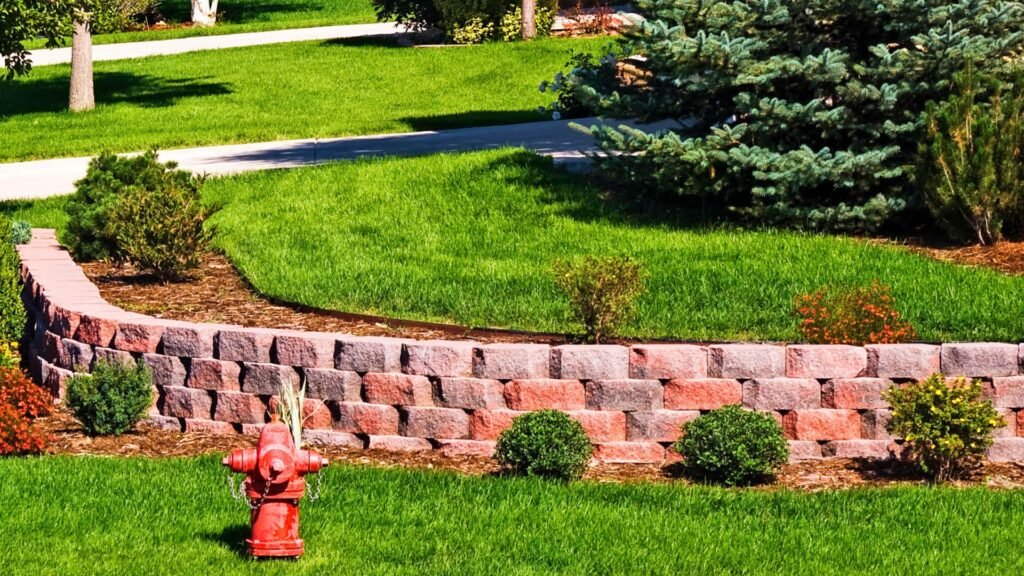
How To Choose The Right Retaining Wall Type For Your NZ Property
Selecting the right retaining wall for your property in New Zealand isn’t just about function, it’s about finding the perfect balance between structure, style, and the land you’re working with. Each property is different, and the wall you choose should suit your specific needs while also enhancing the look of your outdoor space. Here’s how to make the right decision based on key factors that matter to most Kiwi homeowners.
Match The Wall Type To Your Soil, Slope, And Drainage Needs
Before you pick a wall based on looks or budget, consider what’s going on under the surface. NZ properties often sit on sloped or uneven land, which means water runoff, soil type, and stability play a huge role in what wall will work best. Clay-heavy soil holds water and can add pressure behind the wall, while sandy or loose soil may require deeper foundations. If your property has poor drainage, you’ll want a wall type that allows for water to escape easily, like gabion or keystone walls. For steep slopes, piled or reinforced concrete walls offer stronger support. Don’t skip this step, or you might end up with a wall that fails during heavy rain or ground movement.
Think About Visual Style: Natural, Modern, Or Rustic
Your retaining wall should blend with the look of your home and landscape. Timber and stone walls offer a natural or rustic feel and work well in bushy or garden-heavy settings. Concrete sleepers and block walls lean more modern, offering clean lines and a solid presence. Gabion walls have an industrial edge and are popular in coastal or rural properties. Think about how the wall will look next to your driveway, garden beds, or patio. A wall can either stand out or blend in, it’s up to you.
Consider Long-Term Maintenance And Durability
Not all walls age the same way. Timber walls may be cheaper upfront, but they’ll need regular checks for rot, insects, or warping, especially in damp or shaded areas. Concrete and stone walls are more expensive initially but last much longer with minimal upkeep. Gabion walls are low-maintenance and resist erosion, but the wire mesh can corrode over time in coastal regions unless it’s galvanized. Ask yourself: do you want a “set and forget” option, or are you okay with doing touch-ups every few years? Choose based on your time, lifestyle, and how long you plan to stay on the property.
Use A Comparison Table To Make Things Clearer
If you’re feeling stuck between a few options, list them side by side in a simple table. Include soil compatibility, cost range, maintenance level, DIY difficulty, and visual appeal. Seeing it all at a glance can make the decision easier, especially if you’re comparing more than two types. For example, you might find that while timber seems cheaper, interlocking blocks offer better value long-term when you factor in durability and less upkeep.
Choosing the right retaining wall isn’t just a technical decision, it’s a personal one that impacts how your property looks, functions, and holds up over time. By matching the wall type to your land, visual preferences, and maintenance expectations, you’ll get a structure that works hard and looks good doing it.
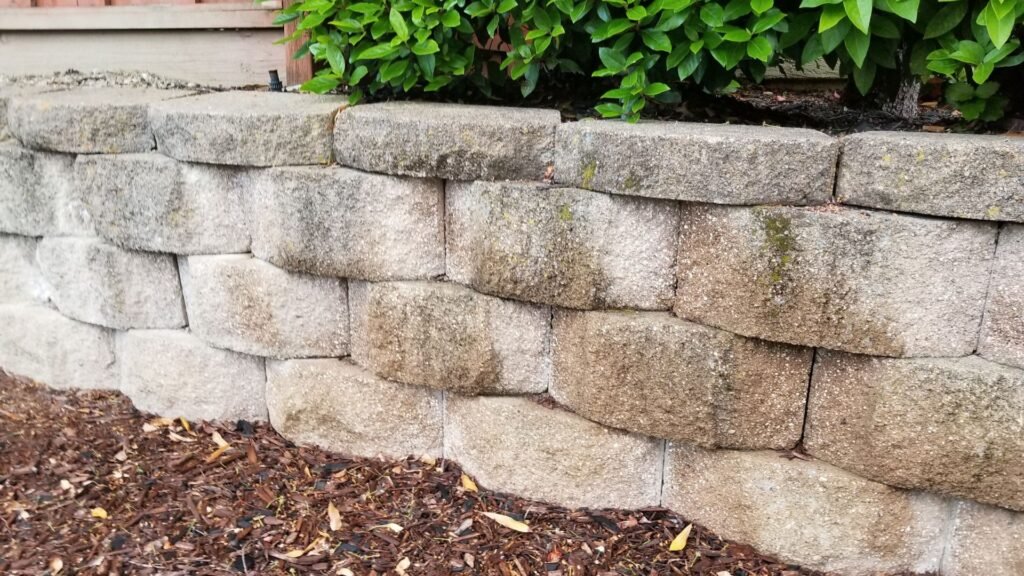
Retaining Wall Costs In NZ
Understanding how much a retaining wall costs in New Zealand is key before starting your project. Prices vary widely depending on the type of wall you choose, how complex the site is, and whether you’re building it yourself or hiring a contractor. Below is a breakdown of what you can expect to pay and what factors will affect your total cost.
General Price Range By Type
Different wall types come with different price tags. Here’s a rough idea of what you might pay per square metre:
- Timber Retaining Walls: $250–$400 per m²
- Concrete Block Walls: $400–$600 per m²
- Interlocking Block Walls: $300–$500 per m²
- Gabion Walls: $350–$550 per m²
- Stone Walls: $500–$800 per m²
- Concrete Sleeper Walls: $400–$700 per m²
- Piled Retaining Walls: $600+ per m² (usually engineered)
Keep in mind these are averages. A small, simple garden wall will cost less than a tall structural wall built on a steep slope.
What Affects Cost
Several important factors influence how much your retaining wall will cost. Ignoring these can lead to surprise expenses or delays.
Height
The taller the wall, the more it costs. Higher walls need more materials, deeper foundations, and often structural engineering. In most NZ regions, walls over 1.5 metres require a building consent, which adds time and cost.
Site Access
If your property is hard to reach with equipment, costs go up. Narrow driveways, steep slopes, or tight corners can make it harder to deliver materials or bring in machinery. This often leads to extra labour or equipment hire.
Engineering
Some walls, especially tall or structural ones, need an engineer’s design. This ensures they meet safety standards and can handle pressure from soil and water. Engineering costs vary but typically start from $1,000–$3,000 for residential projects.
Materials
Material choice makes a big difference in price. Treated timber is often cheaper upfront but may need replacement after 15–20 years. Concrete and stone cost more initially but last longer with less maintenance. Gabion walls and interlocking blocks also offer good durability, often with easier installation.
When To DIY And When To Call A Pro
If you’re building a small garden wall under 1.5 metres with easy access and basic materials like timber or blocks, a DIY approach could save you money. Many homeowners take this route, especially if they’re comfortable with tools and enjoy hands-on work.
But if your wall is taller, supports heavy soil loads, or sits on uneven terrain, it’s best to hire a professional. A poorly built retaining wall can collapse, cause drainage issues, or lead to council fines if it doesn’t meet code. Pros handle permits, structural requirements, and proper drainage, things that make a big difference in the long run.
Before you decide, get a few quotes from licensed builders. It helps to compare not just price but also experience, timelines, and what’s included in their service.
Overall, while retaining wall costs in NZ can add up, making the right choices from the start helps you avoid long-term issues and get the result you want.

Do You Need A Building Consent In NZ?
Before building a retaining wall on your property, it’s important to understand whether you need building consent under New Zealand law. The rules are clear and designed to keep people safe, especially on sloped land or when dealing with high walls that hold back large amounts of soil.
In most cases, you don’t need building consent if the retaining wall is 1.5 metres or less in height and does not support any load other than the soil behind it. This means if your wall is low and not holding up a driveway, building, or heavy structure, you’re likely in the clear.
However, if your retaining wall is over 1.5 metres tall, or if it supports a driveway, garage, building, or steep slope, you’ll likely need a building consent. The same applies if you’re building near a boundary or public land. These conditions increase the risk and therefore require approval to meet the safety standards set out by the New Zealand Building Code.
Another key factor is reinforcement. If your wall uses reinforced concrete or has structural supports like steel or anchors, the design may need to be signed off by a qualified engineer. Even some lower walls with complex drainage systems may trigger the need for consent, depending on your local council’s interpretation of the rules.
Each local council in New Zealand can apply the building code slightly differently. That’s why it’s smart to check with your local council or refer to the official guidelines from the Ministry of Business, Innovation and Employment (MBIE). You can find these rules on the MBIE Building Performance site, or contact your council’s building services team directly.
Ignoring building consent rules can lead to fines, stop-work orders, or legal issues when you sell your home. To stay on the safe side, always confirm your plan before starting construction.
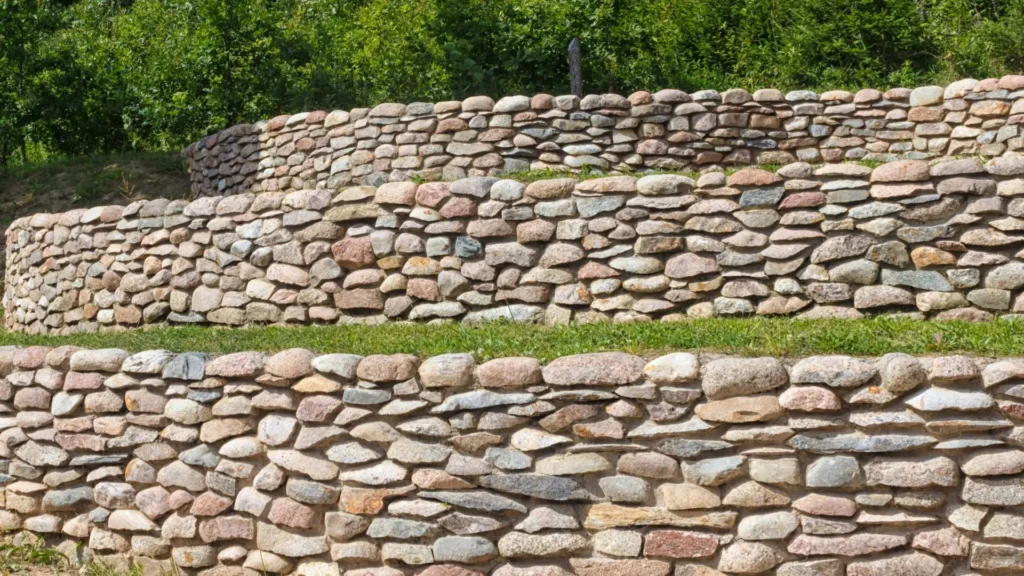
Final Tips & Mistakes To Avoid
When building a retaining wall in New Zealand, choosing the right materials and wall type is only part of the process. Avoiding common mistakes can save you time, money, and future repairs. Whether you’re building a small garden wall or a structural barrier, here are five key mistakes you’ll want to avoid:
- Skipping Drainage
Poor drainage is one of the top reasons retaining walls fail. Without proper drainage, water builds up behind the wall, creating pressure that can lead to cracking, bulging, or complete collapse. Always include a drainage solution, such as gravel backfill, drainpipes, or weep holes, especially in wetter areas of NZ. This step might seem small, but it makes a big difference in how long your wall will last. - Using Untreated Timber
Timber is a popular choice for its affordability and natural look, but using untreated wood is a costly mistake. Moisture, insects, and soil contact will quickly rot untreated timber, leading to early failure. Always choose H4 or H5 treated timber rated for ground contact, especially in coastal or high-moisture areas like Auckland or the West Coast. - Not Checking Council Rules
Before building, it’s important to check local council requirements. In many NZ regions, any wall over 1.5 metres or retaining significant loads requires a building consent. Skipping this step can lead to fines or being forced to remove the structure. Check your local council’s website or speak with a licensed builder to confirm what’s required in your area. - Hiring Unqualified Contractors
A retaining wall needs more than just basic construction skills, it needs proper engineering, drainage planning, and material handling. Hiring a friend or an unlicensed handyman might save money upfront, but the long-term risk is high. Always work with contractors who have experience with retaining walls and can provide references or photos of past work. - Ignoring Soil Type
Soil plays a huge role in how a retaining wall performs. Clay, sand, and rocky soils all behave differently under pressure and water exposure. If you build a wall without understanding your soil’s drainage and stability, it may shift, lean, or crack over time. Get a soil test or ask a professional to evaluate your site before starting the build.
Avoiding these mistakes helps ensure your retaining wall is safe, stable, and built to last. Take the time to plan properly and work with the right people, and you’ll save yourself a lot of trouble later on.
Ready to build the right retaining wall for your property? Visit us to explore how we can help with expert advice, trusted materials, and reliable service across New Zealand.
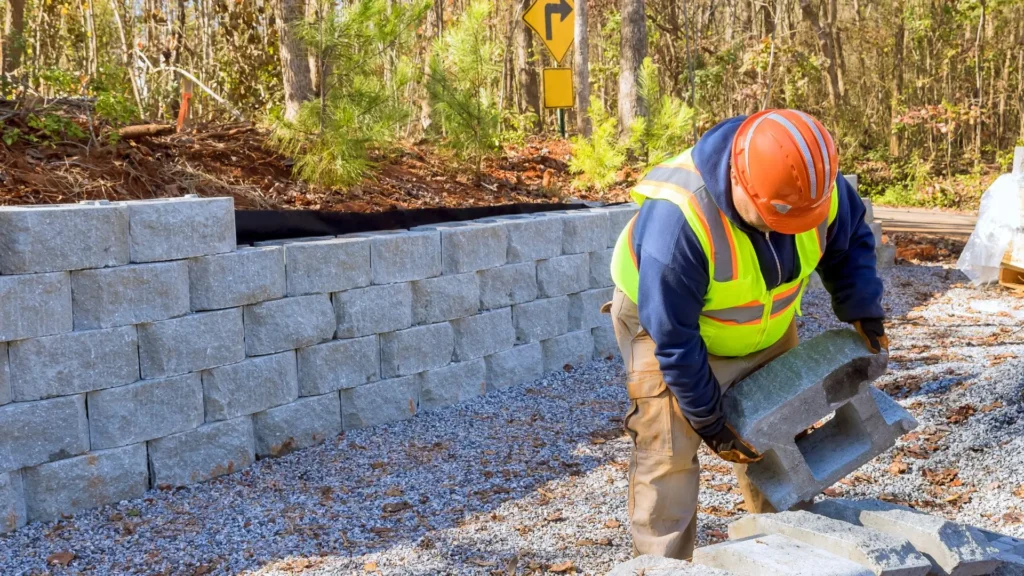
FAQs: About Retaining Wall Types In NZ
What is the most common type of retaining wall in NZ?
Timber retaining walls are one of the most popular choices in New Zealand, especially for residential landscaping. They’re cost-effective, easy to install, and blend well with natural surroundings.
Which retaining wall type lasts the longest?
Concrete block or concrete sleeper walls tend to last the longest when properly built. They resist weather damage, pests, and soil pressure better than timber or stone.
Do I need council consent to build a retaining wall in NZ?
Yes, if your wall is over 1.5 metres high or supports additional loads (like a driveway), you’ll likely need a building consent. Always check with your local council before starting.
What retaining wall is best for DIY projects?
Interlocking block walls (like keystone systems) are great for DIYers. They don’t need mortar and are relatively easy to assemble for small garden or landscape walls.
How much does it cost to build a retaining wall in NZ?
Costs vary by material and site complexity. Timber walls may cost $200–$400 per metre, while concrete or engineered options can exceed $600 per metre.
What’s the best retaining wall for drainage?
Gabion walls are excellent for drainage as water easily flows through the rocks. Interlocking blocks and stone walls also perform well when combined with proper backfill and drainage pipes.
Can I use untreated timber for a retaining wall?
No. Untreated timber can rot quickly and fail under pressure. Always use H4 or H5 treated wood designed for ground contact and outdoor use.
Which wall type looks the most natural?
Stone and timber retaining walls offer the most natural look, ideal for blending into gardens or rural landscapes. Gabion walls also have a rugged, earthy aesthetic.
What type of retaining wall is best for steep slopes?
Piled retaining walls or reinforced concrete walls are best for steep or high-load situations. These require engineering and professional installation.
How do I maintain my retaining wall over time?
Check for signs of bowing, cracks, or drainage issues. Clean out weep holes, remove vegetation that may affect the structure, and re-treat timber if needed every few years.
Conclusion
Choosing the right retaining wall for your property in New Zealand comes down to purpose, appearance, and budget. With options like timber, concrete, stone, and gabion walls, each type offers its own set of benefits based on your land, design preferences, and long-term maintenance needs. Whether you’re leveling out a sloped backyard, controlling erosion, or creating space for a garden, there’s a solution that fits. Before making a decision, it’s worth getting quotes or speaking with a local expert to ensure your choice aligns with both your property and council requirements. No matter your vision, modern, natural, or practical, there’s a wall that fits. Now you just need to build it.

